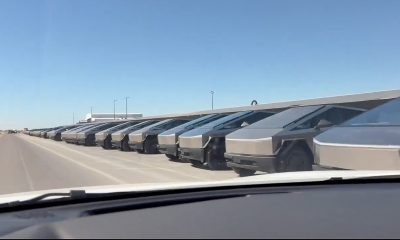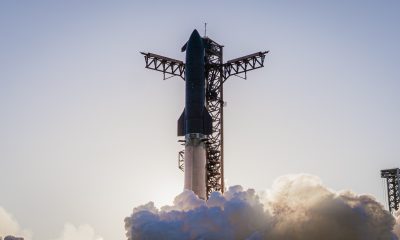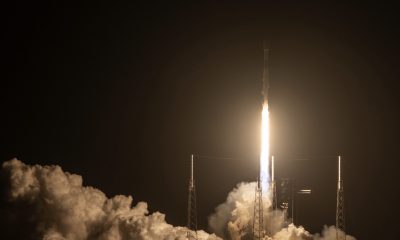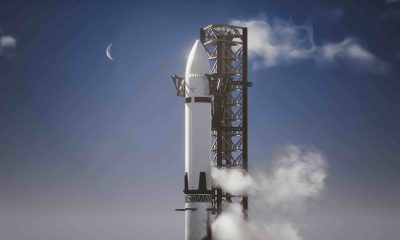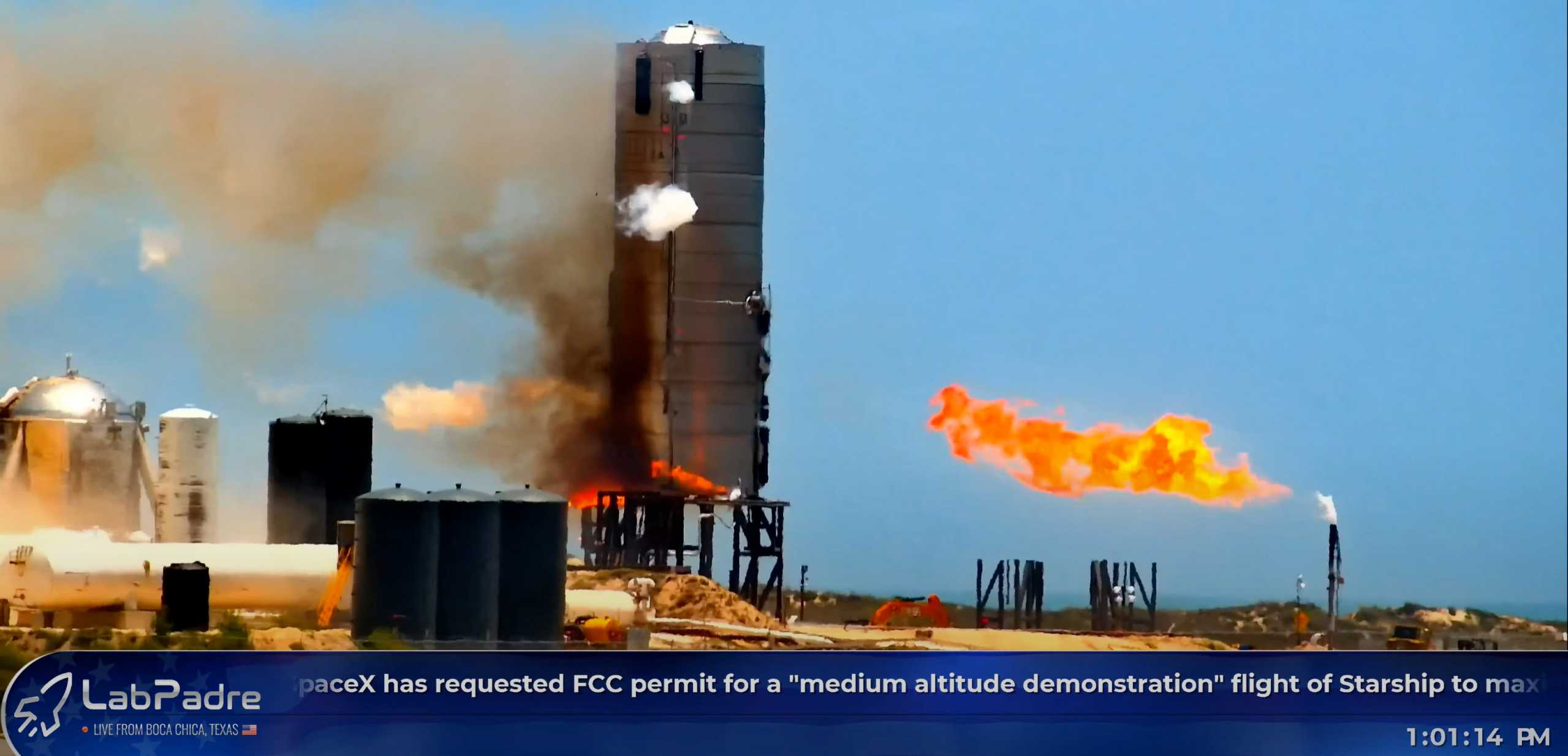
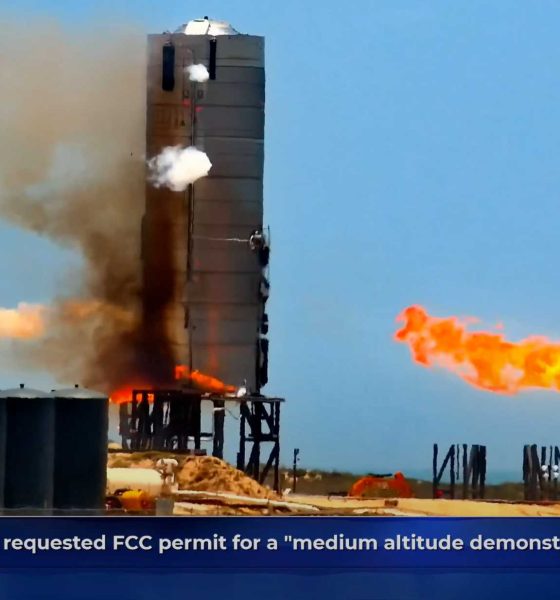
News
SpaceX Starship prototype in limbo after engine test lights rocket on fire
The fate of SpaceX’s fourth full-scale Starship prototype appears to be in limbo after a third (seemingly successful) engine ignition test unintentionally caught the rocket on fire.
Now more than 12 hours after Starship SN4 fired up its new Raptor engine, the ~30m (~100 ft) tall, 9m (~30 ft) wide prototype is apparently trapped with one or both of its propellant tanks still partially filled with liquid (or gaseous) methane and/or oxygen. An initial road closure scheduled from noon to 6pm local quickly came and went and SpaceX and Cameron County Texas have since modified the paperwork, extending the closure a full 24 hours. In other words, SpaceX has reason to believe that Starship SN4 may continue to be unsafe (i.e. pressurized) as many as ~30 hours after it technically completed its third static fire test – extremely unusual, to say the least.
There’s only one obvious conclusion to draw. Whether it was something invisible to the public eye or damage related to the off-nominal fire that burned for some 15 minutes after Raptor shut down, SpaceX appears – to some extent – to have lost control of Starship SN4.
At the moment, it’s unclear what is wrong and what SpaceX is attempting to do to resolve the problem. Based on photos of Starship SN4 taken before the fire, there is good news and bad news from what can be publicly ascertained. Controlled from the ground by unprotected wires strung up and down the rocket and connected at its base, the uncontrolled fire that burned in at least two locations around Starship’s aft may have severed some or all of those critical connections.
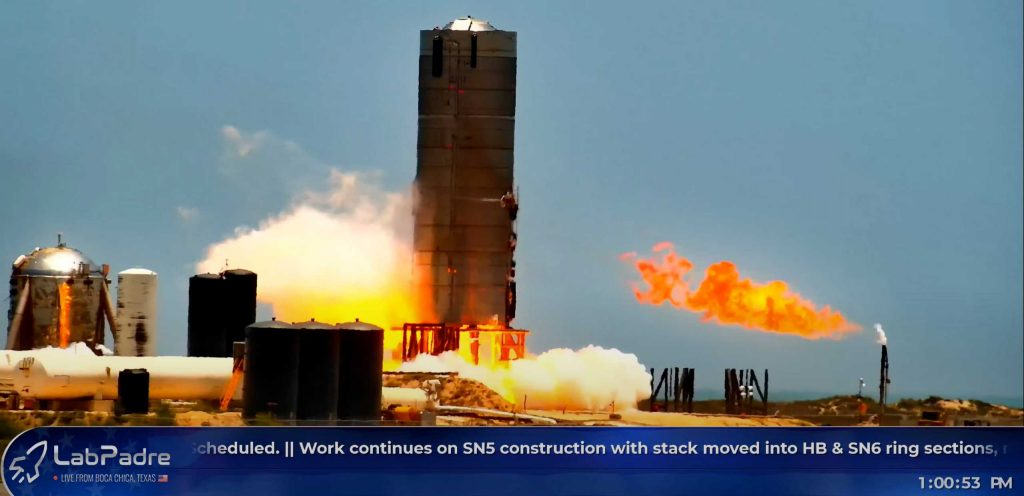
That would render Starship – potentially perfectly healthy and operational – almost entirely uncontrollable, while also potentially removing SpaceX’s access to telemetry. In other words, the company may currently have no idea how pressurized all or part of Starship SN4 is and may also have little to no control of some or all of the rocket. For that to be true, Starship SN4 would, however, have to have less than fully redundant control hardware. To perform hops, for example, the ship would need both wired and radio links capable of sending telemetry and receiving commands to remain both on the ground and after liftoff.
It’s possible that Starship SN4 has the necessary hardware installed but that it wasn’t activated for the static fire test (think “Starship will never leave the ground, why would we need to enable wireless controls?”). It’s also possible that the blown pipe and methane leak that appeared to cause the secondary fire damaged crucial propellant management hardware (valves, pumps, etc.) or was just a symptom of an even worse overpressure event that damaged or destroyed multiple such systems.
Given that safety is almost certainly the priority, chances are that some combination of fairly mild hardware failure and telemetry/control loss has left SpaceX with just enough uncertainty that it can’t risk sending technicians to the launch site to inspect the damage and reestablish control. As a result, the only option left is to quite literally sit and wait until it’s once again safe to approach the rocket. Thankfully, at this point, the risk of the mystery problem actually destroying Starship SN4 is very low. If, as it appears, only its methane tank is affected, leaving some unknown quantity of latent liquid methane trapped inside, it’s possible that waiting will actually solve the problem and safe the rocket.

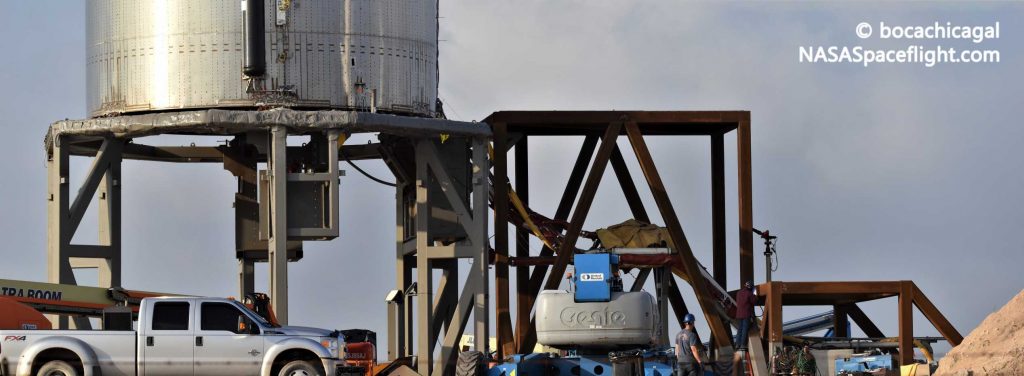
The fact that Starship hasn’t exploded yet strongly implies either that the amount of propellant trapped is minuscule or that the vast majority of SN4’s propellant management systems (including vents) remain functional. Assuming that’s the case, any remaining cryogenic propellant will eventually boil into gas, increasing the pressure inside Starship’s tanks, while those tanks will continue to vent to prevent an explosion or rupture. Eventually, Starship SN4 will be empty once again and SpaceX will be able to approach the rocket to regain control and begin inspections and repairs.
Regardless, after such an unintentionally eventful static fire test, it’s extremely unlikely that SN4 will be ready for its inaugural flight test within the next few days. Stay tuned for updates as SpaceX works to regain control over the fourth full-scale Starship prototype.
Check out Teslarati’s Marketplace! We offer Tesla accessories, including for the Tesla Cybertruck and Tesla Model 3.

News
Tesla is looking to phase out China-made parts at US factories: report
Tesla has reportedly swapped out several China-made components already, aiming to complete the transition within the next two years.

Tesla has reportedly started directing its suppliers to eliminate China-made components from vehicles built in the United States. This would make Tesla’s US-produced vehicles even more American-made.
The update was initially reported by The Wall Street Journal.
Accelerating North American sourcing
As per the WSJ report, the shift reportedly came amidst escalating tariff uncertainties between Washington and Beijing. Citing people reportedly familiar with the matter, the publication claimed that Tesla has already swapped out several China-made components, aiming to complete the transition within the next two years. The publication also claimed that Tesla has been reducing its reliance on China-based suppliers since the pandemic disrupted supply chains.
The company has quietly increased North American sourcing over the past two years as tariff concerns have intensified. If accurate, Tesla would likely end up with vehicles that are even more locally sourced than they are today. It would remain to be seen, however, if a change in suppliers for its US-made vehicles would result in price adjustments for cars like the Model 3 and Model Y.
Industry-wide reassessments
Tesla is not alone in reevaluating its dependence on China. Auto executives across the automotive industry have been in rapid-response mode amid shifting trade policies, chip supply anxiety, and concerns over rare-earth materials. Fluctuating tariffs between the United States and China during President Donald Trump’s current term have made pricing strategies quite unpredictable as well, as noted in a Reuters report.
General Motors this week issued a similar directive to thousands of suppliers, instructing them to remove China-origin components from their supply chains. The same is true for Stellantis, which also announced earlier this year that it was implementing several strategies to avoid tariffs that were placed by the Trump administration.
@teslarati 🚨 Tesla Full Self-Driving v14.1.7 is here and here’s some things it did extremely well! #tesla #teslafsd #fullselfdriving ♬ You Have It – Marscott
News
Tesla owners propose interesting theory about Apple CarPlay and EV tax credit
“100%. It’s needed for sales because for many prospective buyers, CarPlay is a nonnegotiable must-have. If they knew how good the Tesla UI is, they wouldn’t think they need CarPlay,” one owner said.

Tesla is reportedly bracing for the integration of Apple’s well-known iOS automotive platform, CarPlay, into its vehicles after the company had avoided it for years.
However, now that it’s here, owners are more than clear that they do not want it, and they have their theories about why it’s on its way. Some believe it might have to do with the EV tax credit, or rather, the loss of it.
Owners are more interested in why Tesla is doing this now, especially considering that so many have been outspoken about the fact that they would not use it in favor of the company’s user interface (UI), which is extremely well done.
After Bloomberg reported that Tesla was working on Apple CarPlay integration, the reactions immediately started pouring in. From my perspective, having used both Apple CarPlay in two previous vehicles and going to Tesla’s in-house UI in my Model Y, both platforms definitely have their advantages.
However, Tesla’s UI just works with its vehicles, as it is intuitive and well-engineered for its cars specifically. Apple CarPlay was always good, but it was buggy at times, which could be attributed to the vehicle and not the software, and not as user-friendly, but that is subjective.
Nevertheless, upon the release of Bloomberg’s report, people immediately challenged the need for it:
Everyone thinks they need it. I would think that too if I didn’t know how good Tesla’s interface was. CarPlay is a crappy layer on top of crappy info-navs, and people think it’s an imperative because it provides a level of consistency from car to car. They have no clue how much…
— Rich Stafford (@r26174_rich) November 14, 2025
How can it not be when the best engineers choose Tesla over Apple and Tesla’s core focus is auto vs Apple being mobile. It’s what Tesla does every day. It’s a side project for Apple. Still Apple is much better than any other auto OEM who attract lesser talent and make digital…
— Emu (@confessedemu) November 14, 2025
Some fans proposed an interesting point: What if Tesla is using CarPlay as a counter to losing the $7,500 EV tax credit? Perhaps it is an interesting way to attract customers who have not owned a Tesla before but are more interested in having a vehicle equipped with CarPlay?
“100%. It’s needed for sales because for many prospective buyers, CarPlay is a nonnegotiable must-have. If they knew how good the Tesla UI is, they wouldn’t think they need CarPlay,” one owner said.
Tesla has made a handful of moves to attract people to its cars after losing the tax credit. This could be a small but potentially mighty strategy that will pull some carbuyers to Tesla, especially now that the Apple CarPlay box is checked.
@teslarati :rotating_light: This is why you need to use off-peak rates at Tesla Superchargers! #tesla #evcharging #fyp ♬ Blue Moon – Muspace Lofi
Investor's Corner
Ron Baron states Tesla and SpaceX are lifetime investments
Baron, one of Tesla’s longest-standing bulls, reiterated that his personal stake in the company remains fully intact even as volatility pressures the broader market.
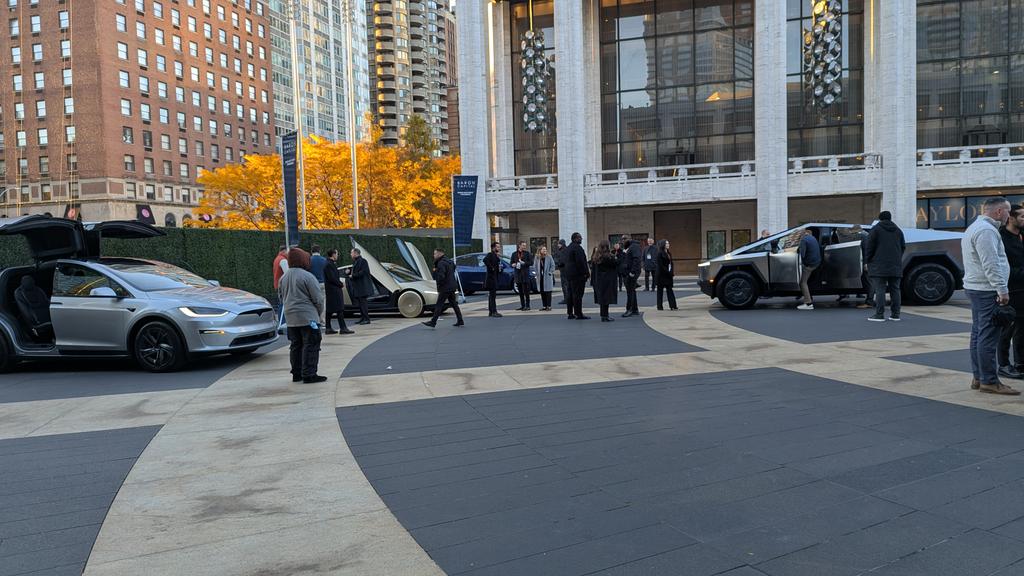
Billionaire investor Ron Baron says he isn’t touching a single share of his personal Tesla holdings despite the recent selloff in the tech sector. Baron, one of Tesla’s longest-standing bulls, reiterated that his personal stake in the company remains fully intact even as volatility pressures the broader market.
Baron doubles down on Tesla
Speaking on CNBC’s Squawk Box, Baron stated that he is largely unfazed by the market downturn, describing his approach during the selloff as simply “looking” for opportunities. He emphasized that Tesla remains the centerpiece of his long-term strategy, recalling that although Baron Funds once sold 30% of its Tesla position due to client pressure, he personally refused to trim any of his personal holdings.
“We sold 30% for clients. I did not sell personally a single share,” he said. Baron’s exposure highlighted this stance, stating that roughly 40% of his personal net worth is invested in Tesla alone. The legendary investor stated that he has already made about $8 billion from Tesla from an investment of $400 million when he started, and believes that figure could rise fivefold over the next decade as the company scales its technology, manufacturing, and autonomy roadmap.
A lifelong investment
Baron’s commitment extends beyond Tesla. He stated that he also holds about 25% of his personal wealth in SpaceX and another 35% in Baron mutual funds, creating a highly concentrated portfolio built around Elon Musk–led companies. During the interview, Baron revisited a decades-old promise he made to his fund’s board when he sought approval to invest in publicly traded companies.
“I told the board, ‘If you let me invest a certain amount of money, then I will promise that I won’t sell any of my stock. I will be the last person out of the stock,’” he said. “I will not sell a single share of my shares until my clients sold 100% of their shares. … And I don’t expect to sell in my lifetime Tesla or SpaceX.”
Watch Ron Baron’s CNBC interview below.
@teslarati :rotating_light: This is why you need to use off-peak rates at Tesla Superchargers! #tesla #evcharging #fyp ♬ Blue Moon – Muspace Lofi
-

 News1 week ago
News1 week agoTesla shares rare peek at Semi factory’s interior
-

 Elon Musk1 week ago
Elon Musk1 week agoTesla says texting and driving capability is coming ‘in a month or two’
-

 News7 days ago
News7 days agoTesla makes online ordering even easier
-

 News1 week ago
News1 week agoTesla Model Y Performance set for new market entrance in Q1
-

 News1 week ago
News1 week agoTesla Cybercab production starts Q2 2026, Elon Musk confirms
-
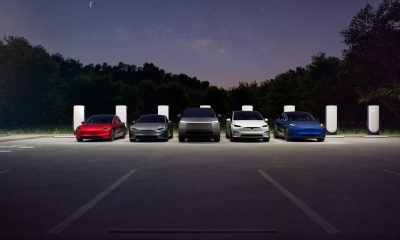
 News6 days ago
News6 days agoTesla is launching a crazy new Rental program with cheap daily rates
-

 News1 week ago
News1 week agoTesla China expecting full FSD approval in Q1 2026: Elon Musk
-

 News1 week ago
News1 week agoTesla Model Y Performance is rapidly moving toward customer deliveries


